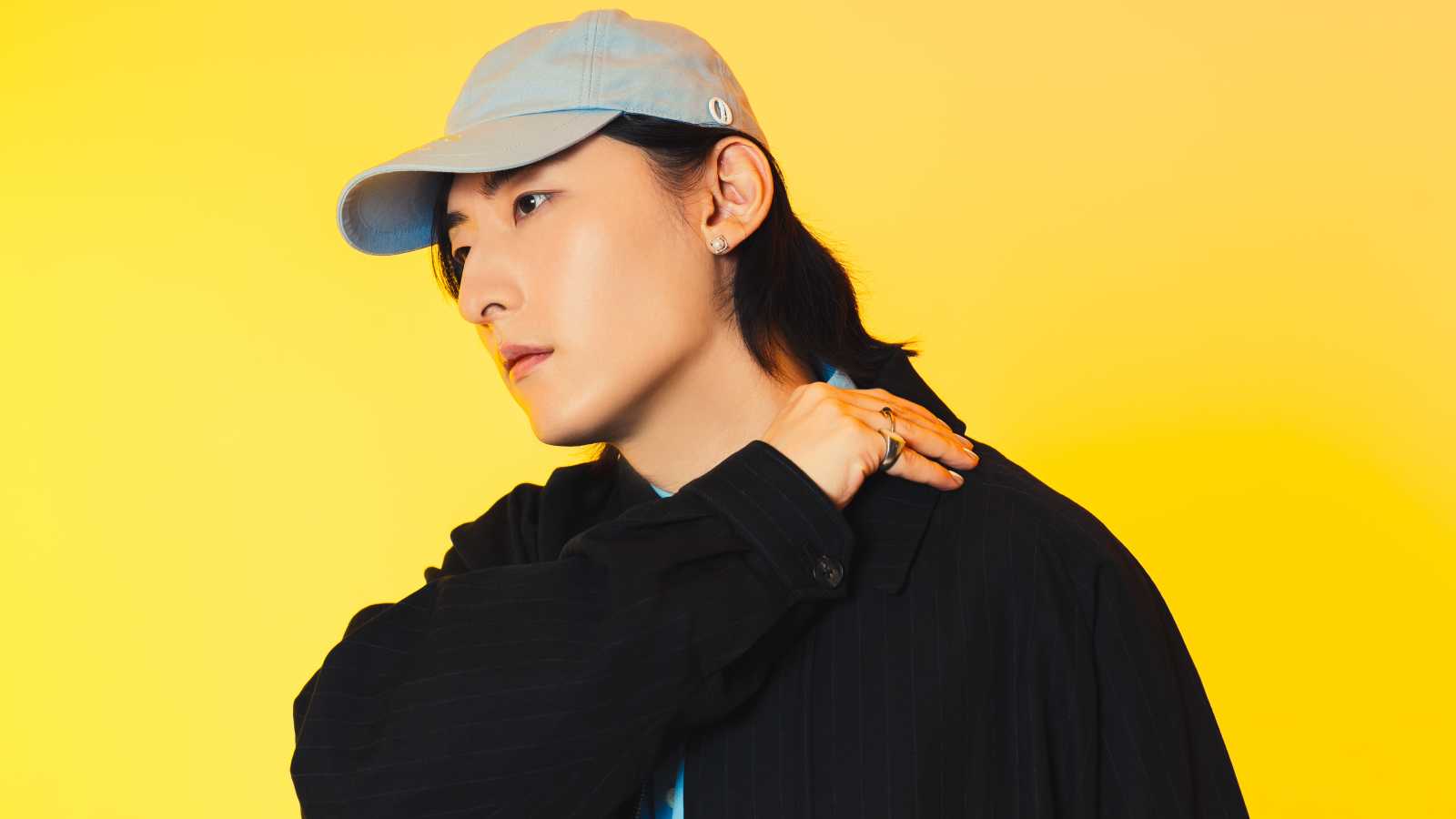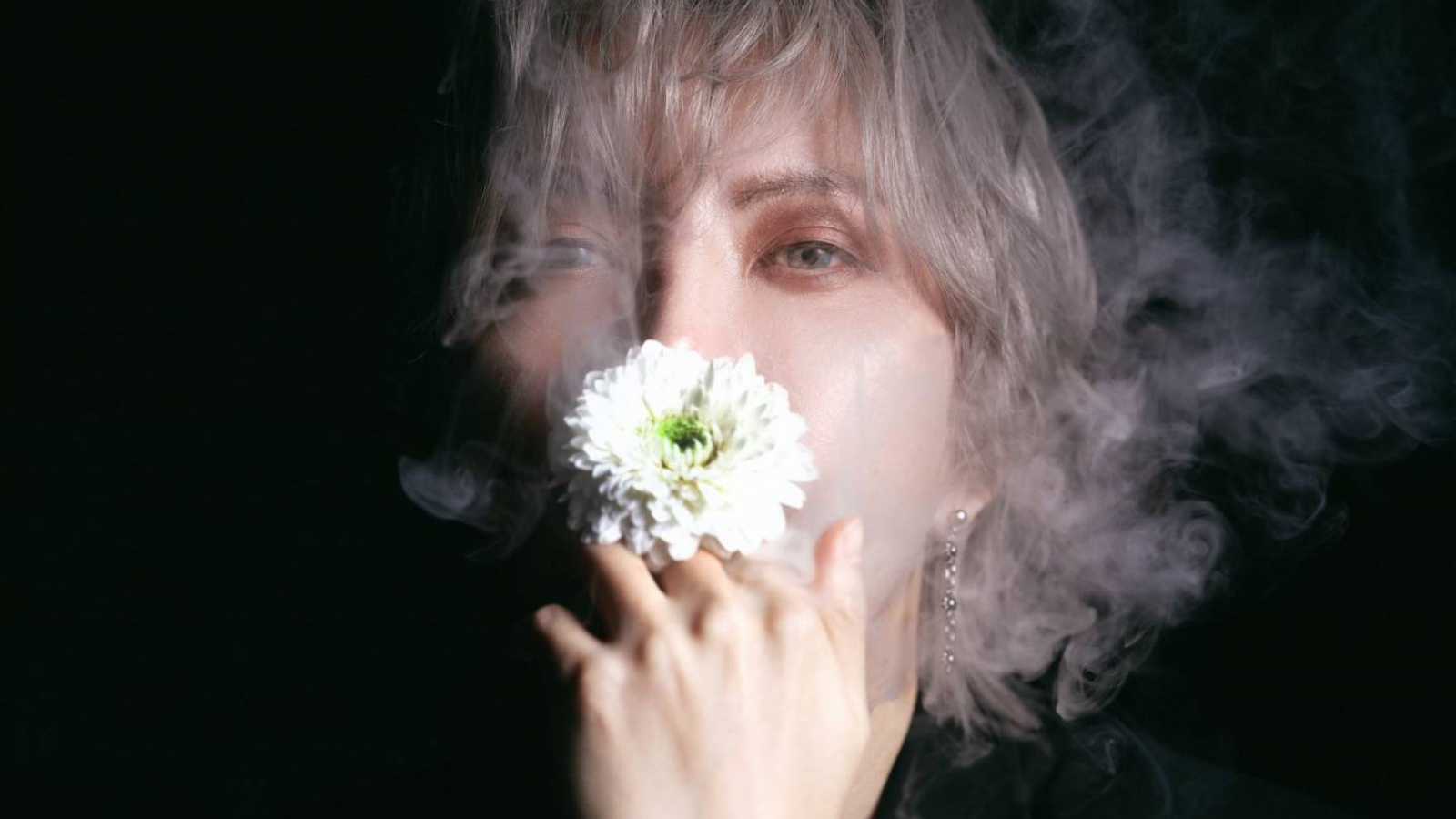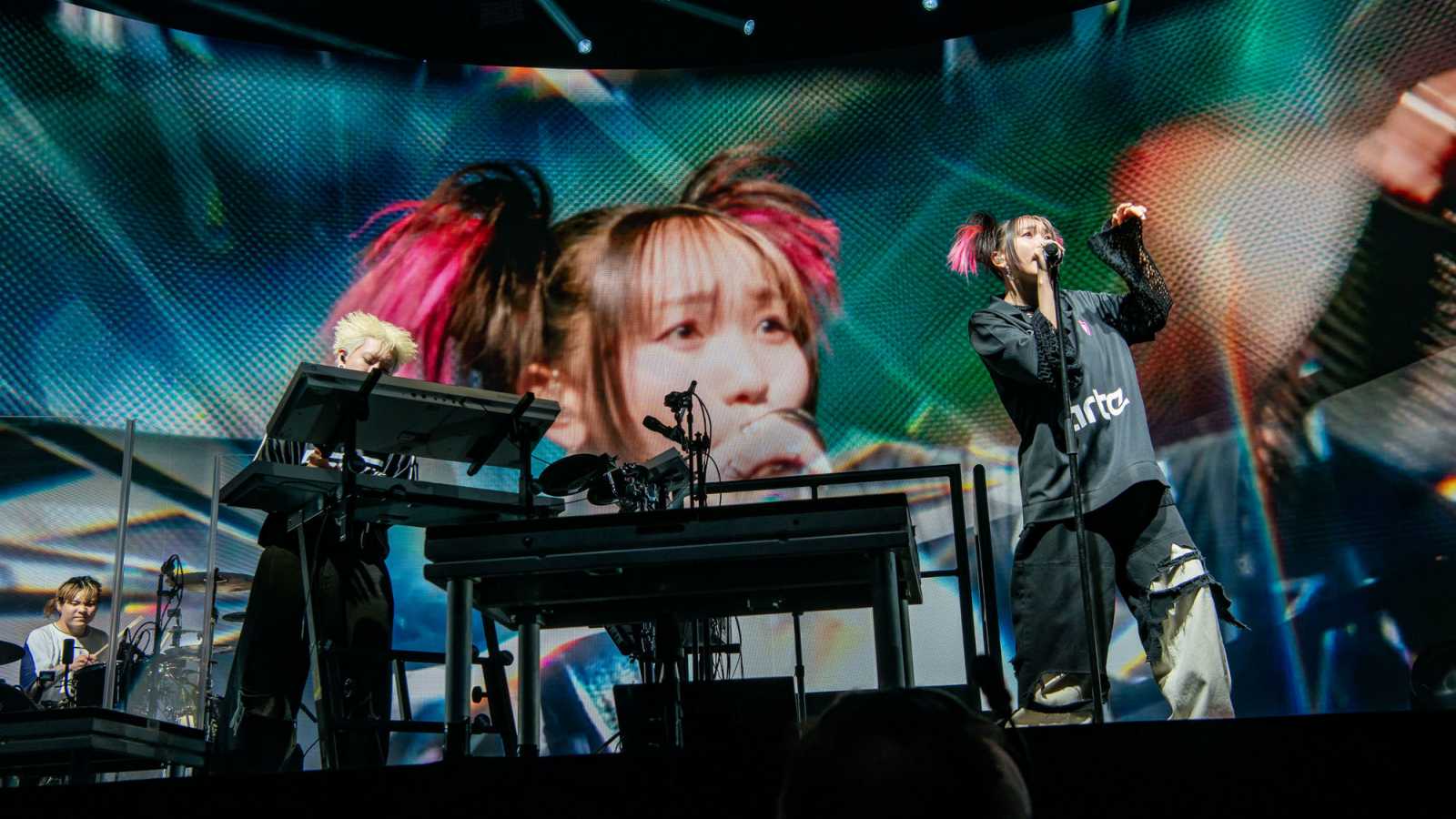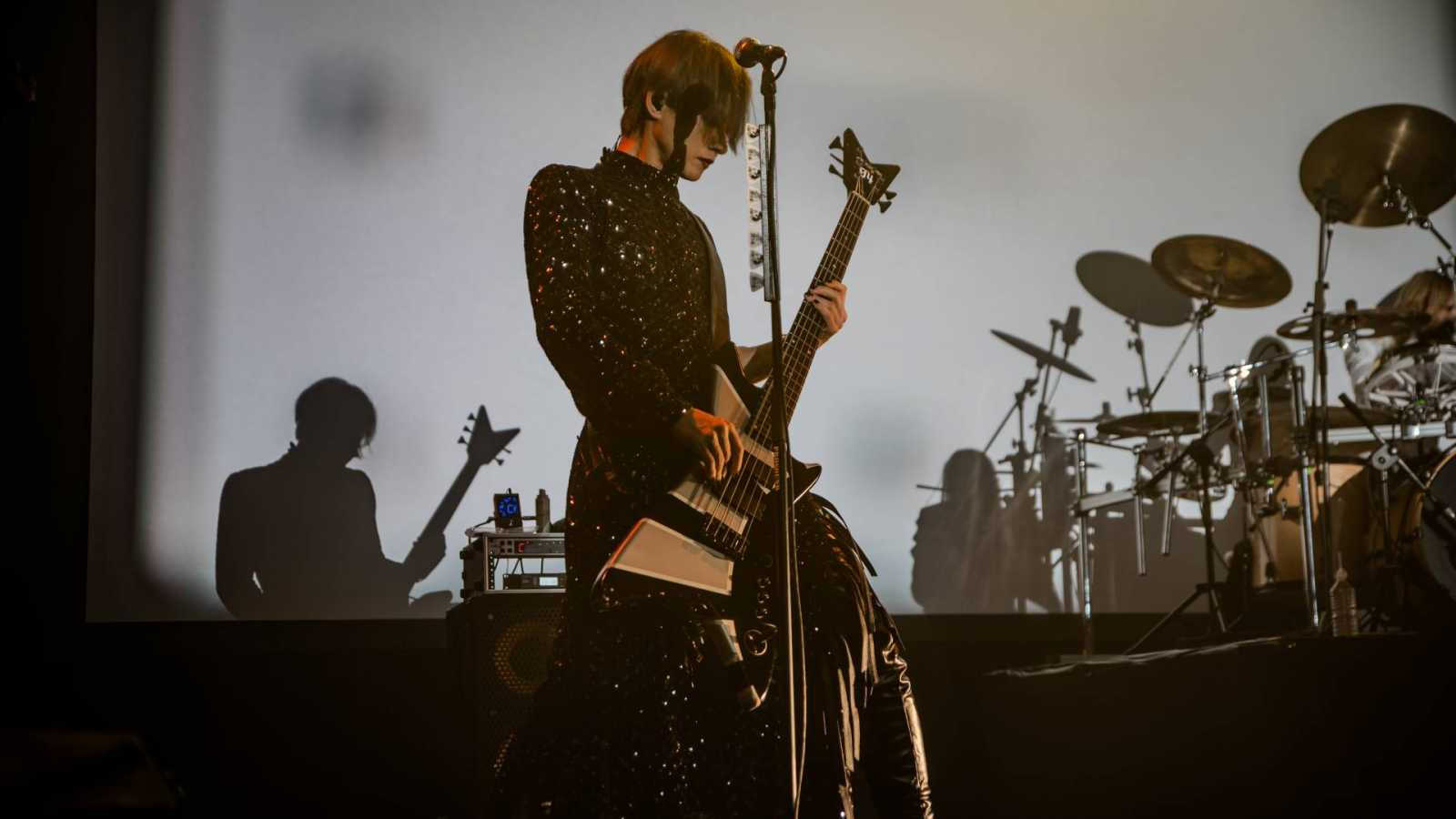As usual, visual band/industrial rock group
SUICIDE ALI returns with an album that has some real zingers on it. Now in their fifth year, it seems the band has perfected their craft, though they are sure to continue to evolve and transform in the future.
The first track
Road of the wing opens with a fast beat, glittering synths and epic strings offset by
Hiroshi's dark guitar. While the verses and chorus are melodic and positive, the chorus, sung emotionally by
Goshi, is darkened by the animalistic death vocals in the intervals. With its digital element, head banging guitar riffs, driving pace and dual vocal styles,
Road of the wing is a strong number that opens the album as if to assure the listener they will get a little of everything in this album.
Aoi ookami ga mita zekkei opens again with synths, but they are immediately zany, jazzy and zip all over the scale at warp speed. Also in contrast to the previous track, the death vocals make an early appearance, darkening the fast pace. The atmosphere changes drastically for the chorus; while the established sense of frenzy and intensity is maintained, the emphasis switches to the melody, supported by heart wrenching piano that makes the overall feel poignant and beautiful. The third track,
Yuukaigokko, opens with mysterious chimes and is quickly supported by low, aggressive guitars. The vocals are dark and mysterious as well, though the pace is fairly fast. The chorus is less easy to distinguish, and the bridge is borderline creepy as
Goshi sings eerily, “Don’t try to escape.”
The following
Kaze no slave incorporates synths less, relying more on the traditional rock instruments.
kozi’s bass is especially present in the verses, and
Goshi’s singing is soft and dream-like, but darkly disturbed. For the chorus, the violins come in and
Hisashi’s beat slows down, becoming more dramatic and powerful. The bridge features an aggressive guitar duet with impressively tortured, wretched vocals.
Representa has an interesting feel as the beat drops out in the first chorus, leaving the twin guitars, bass and vocals to manage on their own. The vocals in the chorus follow an evocative and enjoyable line, and
Goshi delivers them in his eerie way first, but switches to clear and earnest for the later rounds. The beauty of the melody and vocals will pull at your heart strings as he finishes, “Keep on living. You can keep on living.”
Amphibia keeps up a driving pace with aggressive guitars and a fun beat, its overall atmosphere darkened by the heavy guitars and vocals. The pace increases for the chorus, but unfortunately, the melodies aren’t particularly compelling. However,
Hiroshi's guitar solo is impressive; its notes are writhing at times, tortured and agonized, making this a must-hear song.
A flute motif features in
Fuefuki douji, as we might expect from the title "Flute Playing Boy." Without their customary soft intro, the heavy guitars, fast beat, and clear sounding flute explode powerfully. The flute dances urgently over the scale, and another treat is the acoustic guitar in the chorus that fades in and out between the electric. Tension runs high throughout the song, accented by death vocals and ominous droning. The final segment is especially moving as
Goshi changes up his melody line, singing with great emotion, and the acoustic continues supported by the flute.
Rebandyisyu ringu has the fastest pace of all when it really gets going, though its tempo varies throughout. A little unusual is the keyboard echoing softly in the background of the verses. The bass is especially present in this song, in both verses and chorus, in which
Goshi’s double voices sing along two different melody lines, resulting in a beautiful effect.
Track nine is pure magic.
kozi steals the show at the beginning of
Aza-Sailla-, his line later still clear even after it’s layered over with guitars, synths and trumpets. The electronic vocals in the verses, leisurely pace and smooth jazz influence work together to create a song that’s an absolute delight.
Goshi’s vocals are surprisingly suited for such a blend, and he seems to give himself over completely to the atmosphere created in the song. Towards the end, the guitars become harder for a moment while the trumpets continue their cheery tune, resulting in an unconventional but enjoyable melange of hard rock and light jazz. The adventurousness of the track, its catchiness and its infectiousness that sweeps you into an addictive world all its own make it easily one of the best on the album.
The final track,
Lorent, opens mysteriously with droning vocals evocative of an imam, in keeping with their subtle Muslim theme. This is cushioned by futuristic, computerized chimes and unusual drums. Abstract and exotic, these sounds persist as guitars are layered on. As far as instrumental pieces go, it’s inventive, experimental, and intriguing. If you are expecting another
Aza-Sailla- it will disappoint, but taken on its own terms, the track is fairly likable and closes out the album with the message that this group is most certainly not your typical visual band.
Overall,
Dai4 no waltz sparkles with imagination, and while it’s full of songs that will undoubtedly be a treat to experience live, the excitement of each is easily felt on CD as well. Expanding the borders of what visual kei can be, this is an album that
SUICIDE ALI should certainly take pride in, and one that should delight listeners of various musical genres – particularly those on the hunt for something a little unusual.
This review was made possible by Tainted Reality Online Store, where the item is available for purchase. 


